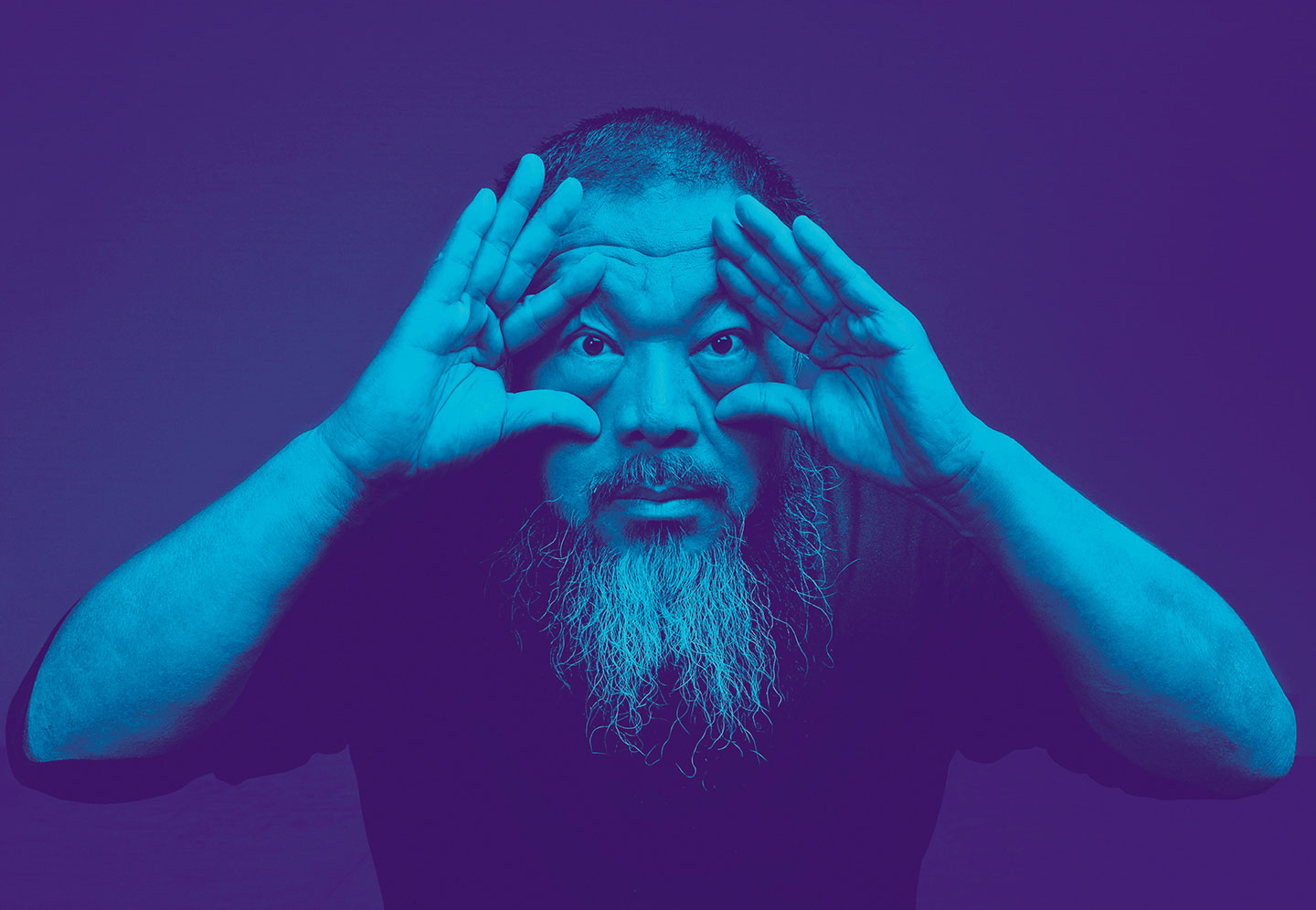Ai Weiwei’s TRACE
May 9–Jul 7, 2018

Portrait of Ai Weiwei. Image courtesy of Ai Weiwei Studio.

Installation of Ai Weiwei: TRACE in Chicago at Wrightwood 659, 2018 © Alphawood Exhibitions LLC, Chicago. Courtesy Alphawood Exhibitions Chicago. Photo by Tom Rossiter.

Installation of Ai Weiwei: TRACE in Chicago at Wrightwood 659, 2018 © Alphawood Exhibitions LLC, Chicago. Courtesy Alphawood Exhibitions Chicago. Photo by Tom Rossiter.
Organized by the Hirshhorn Museum and Sculpture Garden, Washington, DC, the site-specific installation will be on view from 9 May–7 July, 2018 at 659 W. Wrightwood Ave., in Chicago’s Lincoln Park neighborhood.
Trace is a monumental work comprising nearly one million individual LEGO® bricks arranged to depict women and men from around the world whom the artist considers activists, prisoners of conscience, or advocates of free speech. The work was commissioned in 2014 by the nonprofit FOR-SITE Foundation, in partnership with the Golden Gate National Parks Conservancy, for an exhibition at Alcatraz, the former penitentiary in San Francisco, where it drew nearly one million visitors. In 2017, Trace made its institutional debut at the Hirshhorn, which recently acquired it for its permanent collection. The creation of Trace was shaped by Ai’s own experiences as a prisoner of the Chinese government. Having previously been brutalized and censored for his activism and outspoken criticism of totalitarian regimes, in 2011 he was incarcerated, interrogated, beaten and kept under surveillance in Beijing for 81 days and then prohibited from traveling abroad until 2015. He conceived and planned Trace during this period.
Ai Weiwei selected the individuals depicted in Trace based on information provided by Amnesty International and other human rights organizations, as well as independent research by the artist’s studio and the FOR-SITE Foundation. Initial research was completed in June 2014 and was updated in April 2017 for the Hirshhorn’s exhibition Ai Weiwei: Trace at Hirshhorn. More information about the prisoners of conscience in “Ai Weiwei: Trace in Chicago” can be found on the FOR-SITE Foundation website.
Alphawood Exhibitions presents Ai Weiwei’s Trace in Chicago.
About the Artist
Ai is recognized around the world as a creative force and cultural commentator, and for nearly three decades he has redefined the role of both artist and activist. His conscience-driven body of work ventures far beyond the art world and into the realm of modern politics, addressing the movement of refugees, government conflicts, incarceration, a nd perceived injustice. Despite, or perhaps because of, his unorthodox approach to art making and his expanding social and media savvy, he is arguably among the world’s best-known living artists.
Born in Beijing in 1957 to renowned poet and intellectual Ai Qing, Ai Weiwei grew up in the Xinjiang region, where his father was exiled in 1959 by the Communist regime. In 1978, the younger Ai studied at the Beijing Film Academy before moving to the United States in 1981. He returned to China in 1993 and helped establish the Beijing East Village contemporary art scene, named for the New York neighborhood in which he had lived. In 2011, after a period of escalating conflict with Chinese authorities over his artwork, Ai was arrested and detained in secret for nearly three months before his release. His passport was confiscated, and he was unable to leave China until it was returned to him in 2015.
Ai’s recent major solo exhibitions include those held at the Mori Art Museum, Tokyo (2009); Tate Modern, London (2010); the Hirshhorn Museum and Sculpture Garden, Washington, D.C. (2012); the Royal Academy of Arts, London (2015); the Palazzo Strozzi, Florence, Italy (2016), and those of Trace at Alcatraz and the Hirshhorn. He has received numerous awards and honors, notably Amnesty International’s Ambassador of Conscience Award (2015) and the Wall Street Journal’s Innovator of the year (2016).
Ai Weiwei: TRACE is organized by the Hirshhorn Museum and Sculpture Garden, Smithsonian Institution, Washington, DC.
![]()
Join E-News
Please sign up to receive our weekly E-News, full of timely and insightful information about our exhibitions, artists and programs.
Our next exhibition "Chryssa & New York" opens May 3, 2024. Tickets are now on sale.
We look forward to seeing you soon.